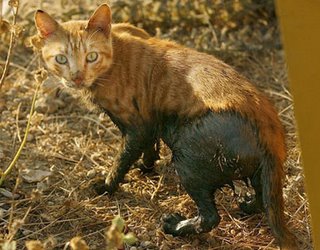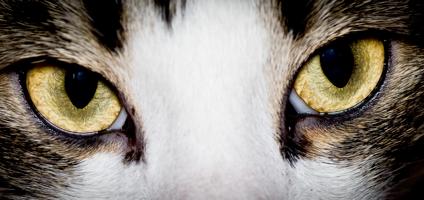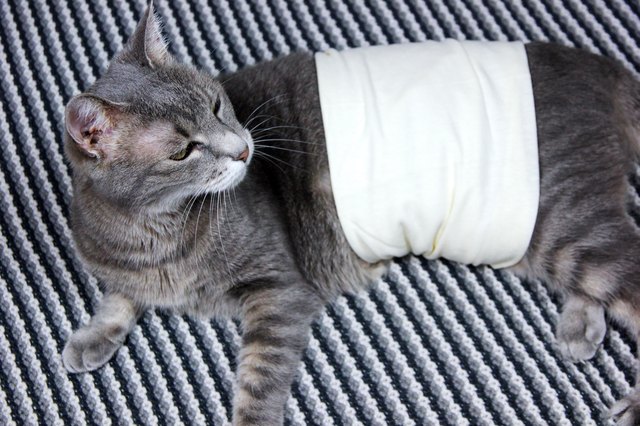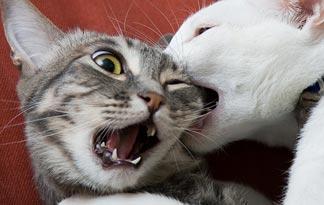Show your cat extra physical affection. Most cats in heat strongly desire affection. Put your cat on your lap and pet her. Groom her several times a day with a soft-bristled brush, rubber curry brush or grooming glove. These brushes are safe to use frequently without harming the cat’s fur or skin.
Distract your cat with play or cat exercise. During estrus, many cats have extra energy, most of which they use to try to get outside. Regular play sessions will use up some of her energy and keep her mind off her desires. Interactive play, such with a cat fishing pole, is ideal. If you have limited time to play, provide bird catcher cat toys.
Consult a veterinarian about prescription feline contraception. Cat birth control comes in pill and injection form. Both stop your cat from having a heat cycle. Because long-term use has side effects such as increased risk of uterine infections and diabetes, your vet should help you decide whether this option is appropriate.
Place the cat in a cool, dimly lit room for several days to simulate autumnal conditions. Queens go out of cycle when the days are cooler and shorter. Spending time in similar conditions may bring your cat out of heat. Continue providing affection and frequent play sessions to prevent boredom.
Enlist the services of a teaser tom cat. A teaser tom is a male cat that has been sterilized by vasectomy. Such a cat retains the physical ability to mate. Mating your female cat with a teaser tom will bring her out of heat with no risk of pregnancy. Contact a breeder to find a teaser tom for rent.







